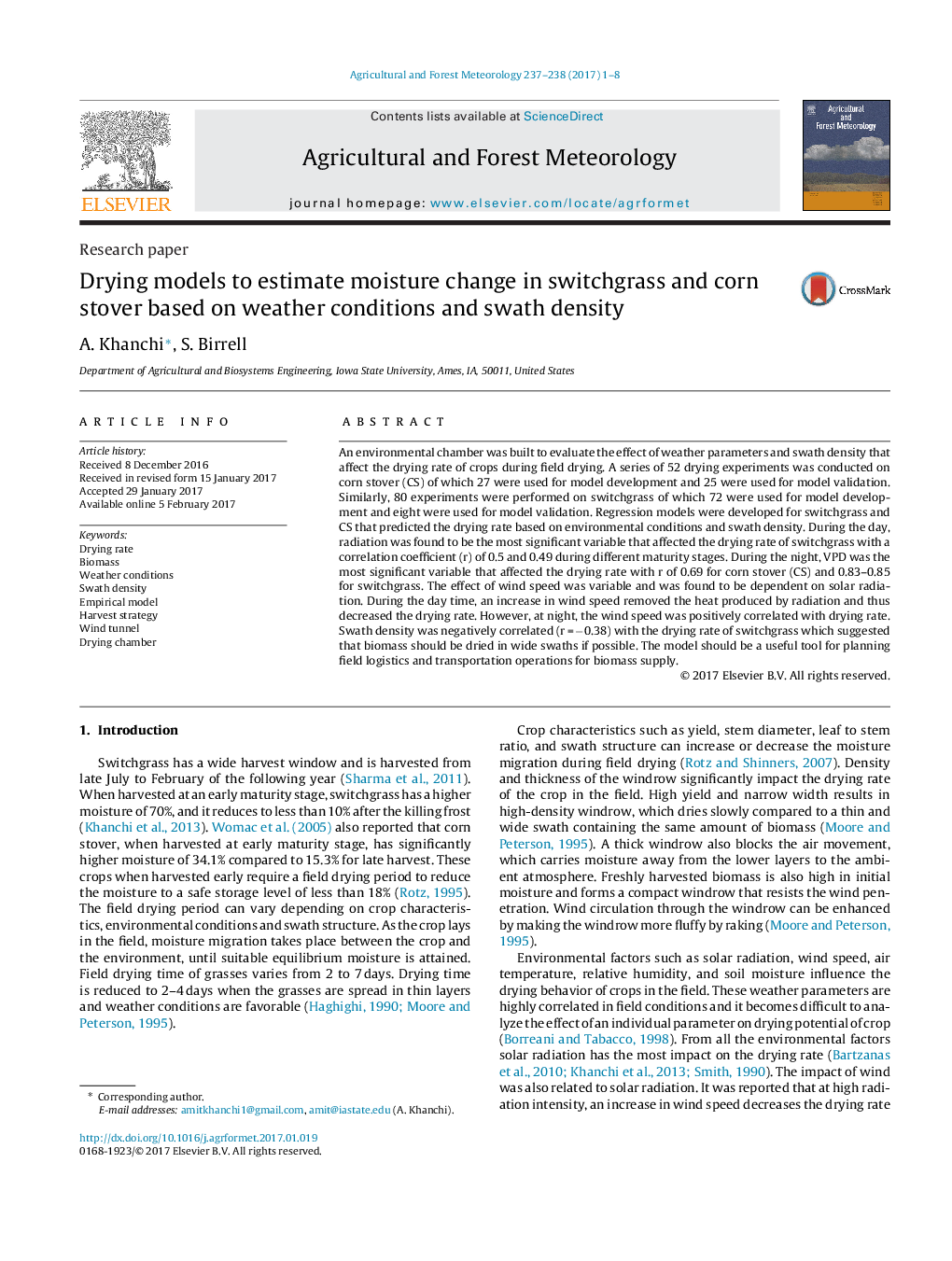| کد مقاله | کد نشریه | سال انتشار | مقاله انگلیسی | نسخه تمام متن |
|---|---|---|---|---|
| 6457890 | 1420861 | 2017 | 8 صفحه PDF | دانلود رایگان |
• An environmental chamber was designed and fabricated to simulate field conditions.
• Impact of weather parameters and swath density was evaluated on drying rate of switchgrass and corn stover.
• Regression models were developed that predicted the drying and wetting of crops in the field conditions.
• Radiation and vapor pressure deficit were the most significant factors affecting the drying rate of crops during day and night, respectively.
An environmental chamber was built to evaluate the effect of weather parameters and swath density that affect the drying rate of crops during field drying. A series of 52 drying experiments was conducted on corn stover (CS) of which 27 were used for model development and 25 were used for model validation. Similarly, 80 experiments were performed on switchgrass of which 72 were used for model development and eight were used for model validation. Regression models were developed for switchgrass and CS that predicted the drying rate based on environmental conditions and swath density. During the day, radiation was found to be the most significant variable that affected the drying rate of switchgrass with a correlation coefficient (r) of 0.5 and 0.49 during different maturity stages. During the night, VPD was the most significant variable that affected the drying rate with r of 0.69 for corn stover (CS) and 0.83–0.85 for switchgrass. The effect of wind speed was variable and was found to be dependent on solar radiation. During the day time, an increase in wind speed removed the heat produced by radiation and thus decreased the drying rate. However, at night, the wind speed was positively correlated with drying rate. Swath density was negatively correlated (r = −0.38) with the drying rate of switchgrass which suggested that biomass should be dried in wide swaths if possible. The model should be a useful tool for planning field logistics and transportation operations for biomass supply.
Journal: Agricultural and Forest Meteorology - Volumes 237–238, 1 May 2017, Pages 1–8
